
Google has gotten better and better over the years at providing search recommendations targeted to the exact location of the searcher. This is great when you are searching for the nearest Starbucks; but when someone is looking for solar installation near their home, is your business being treated like a coffee shop?
In our webinar from Mid-January, we discussed Google’s local search bias and how it creates some hurdles for the HVAC, home performance and solar industries. Here are our recommendations on how to overcome them.
The Key Factors in Local Search Ranking
At the end of 2018, we took a deep dive into the 2018 Local Search Ranking Factors Survey and found that Google My Business features were among the top ranking factors for the Local Pack. Link signals, review signals and on page signals also play a substantial role.
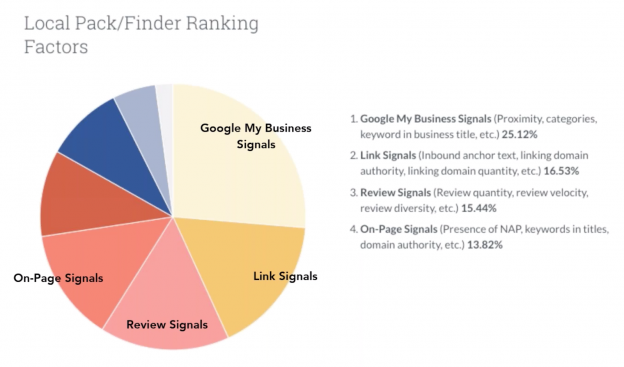
This 2018 Local Search Ranking Factors survey from Moz shows that Google My Business impacts local search substantially. This includes your listed address but currently does not account for your service area.
These factors all contribute to how you rank in organic search results. But we also now know that regardless of whether a searcher enters geographical terms in their search or not, Google knows where the searcher is and will localize the results.
These localized results will show up above organic results in the local pack.
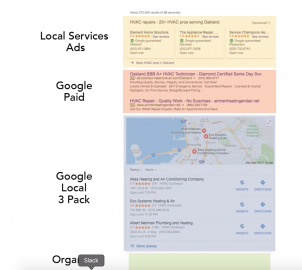
The local pack is where the pertinent proximity results show up.
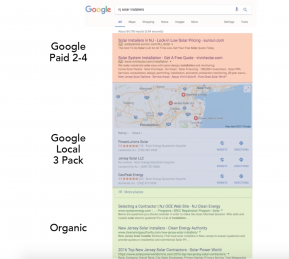
In a perfect world, your business will show up in both the local pack and organic results for a much higher click-through rate.
The Google Proximity Bias
Google has gotten increasingly more accurate in identifying the exact location of the searcher. And Google is using that exact location to find the nearest listed address for a relevant business. As we stated previously, this is great when you are looking for a bite to eat or a place that can only do business under their own brick-and-mortar roof. But for an HVAC company, an actual service area might extend two towns away from the listed address.
Currently, this proximity bias trumps nearly all of our previous advice on tending to your search ranking factors. A thorough study done in Edmonton, for example, shows these top local results were for businesses that had no reviews, no claimed GMB profiles, and one company that didn’t even have a website!
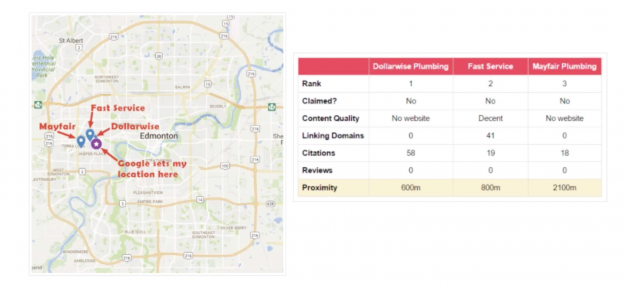
Google maps search results from a local search study showing proximity bias in action -none of these plumbers have claimed GMB listings, and other local SEO factors are taking a back seat to proximity.
There may be hope for the future of the proximity problem for our industries, though. Google has been asking some businesses in the better building sector to select service area listings, which we can assume means Google is in the process of developing a solution to the problem.
What Can You Do to Overcome Google’s Proximity Bias?
There are still a few ways you can reduce the number of leads lost to contractors who are arbitrarily closer to the searcher than you are.
Establish Your Geographical Targets
Develop a plan with your geographic targeting, based on your service area. Where will there be the most opportunity, and which areas do you prefer to take jobs? This can be a formal geographic name or phrase, like “Wichita Falls”. Or it can be more colloquial, like “Chicagoland” or the “Eastern Shore.” We recommend that you pick your top 5.
Buy Your Way In
You can purchase a spot in the local pack using Google Ads and the local extension. This will show up with an “ad” badge, but is not an automatic in. It has been found that 40% to 50% of home services local pack results already have ads in them.
Reflect Your Geographical Targets Across Your Website
This could be the most impactful tip: make sure your key geo terms are represented throughout the titles of all the pages on your site. Title tags should contain your targeted service, business name and geography (in that order.) Make sure to keep it under 56 characters, so the entire page title is displayed on results pages.
Showcase Geo-Targeted Case Studies
The key with case studies is simplicity and volume. You don’t need to spend all of your time and energy on perfect content production with these case studies — simply include photos, basic project details and prominent geography, like this:
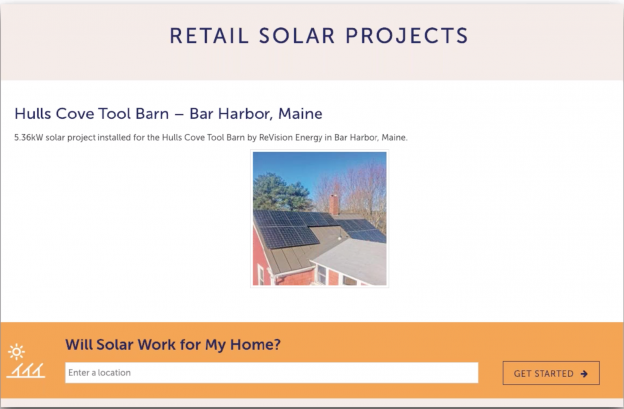
Our recommendation for case studies on your HVAC, home performance or solar website is volume and simplicity over density and detail. Don’t get bogged down with making it too complicated!
Our recommendation for case studies on your HVAC, home performance or solar website is volume and simplicity over density and detail. Don’t get bogged down with making it too complicated!
A/B Pages for Different Geo’s
Create separate service pages for each of your service areas. If you serve both Denver and Colorado Springs, create separate pages to target each city specifically. Though be warned — you cannot simply “Mad Lib” these pages by inserting the city name into a copy of the same content. Switch up the wording as much as possible to avoid any “spammy” penalties.
Good for Local Search, Good for Business
Though our recommendations will help overcome the proximity problem in local search, they are also best practices across the board. Optimizing your HVAC, home performance or solar website for local search will make you more visible to those who live in your area and drive more leads while we wait for Google to settle on a solution to differentiating your business from the local taco bar!